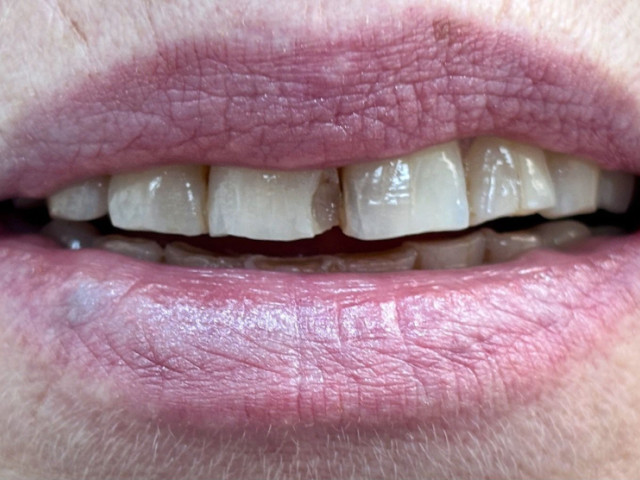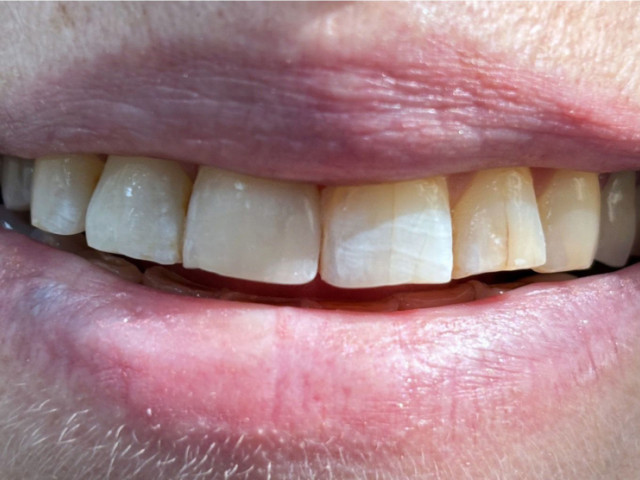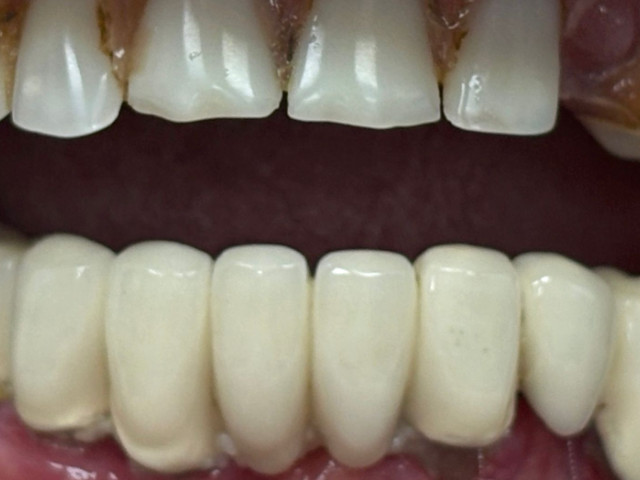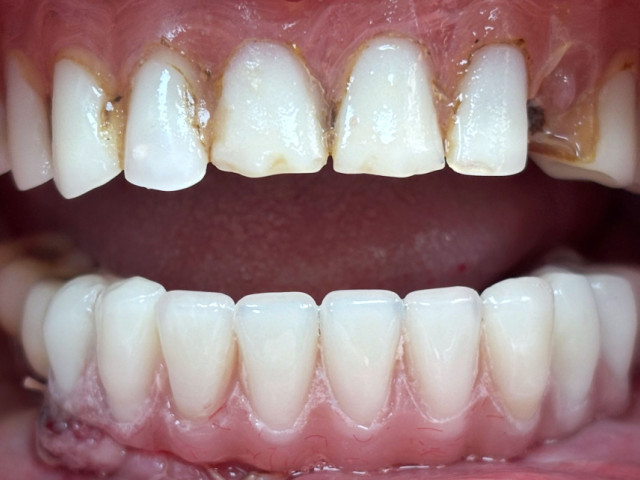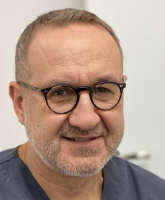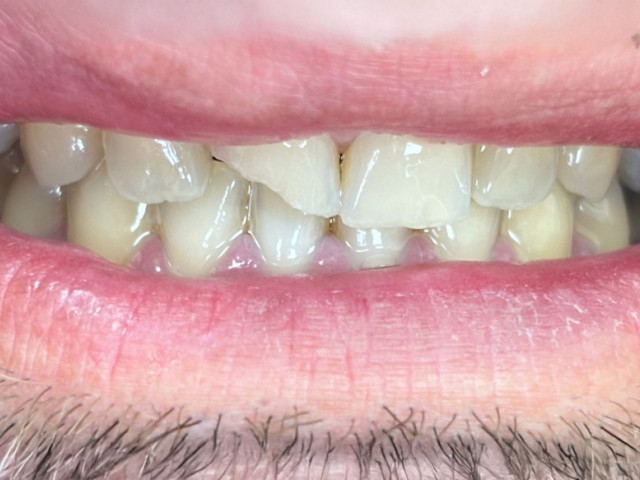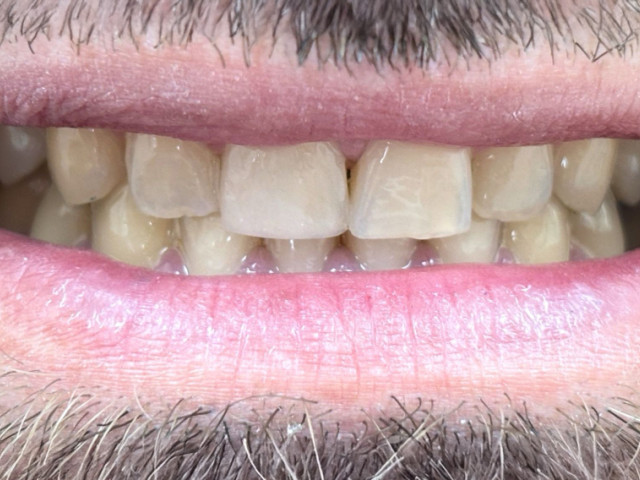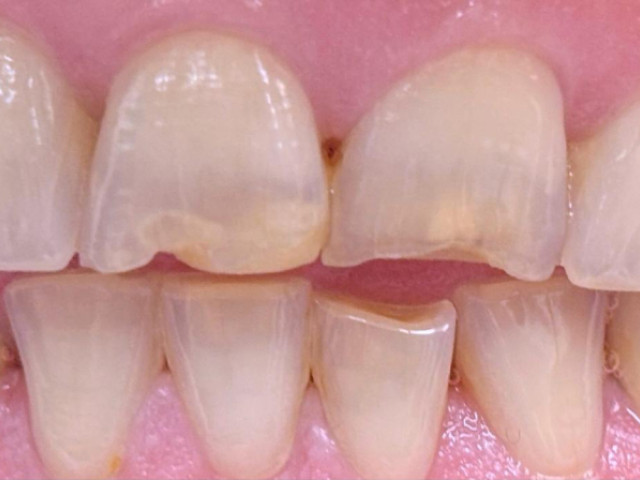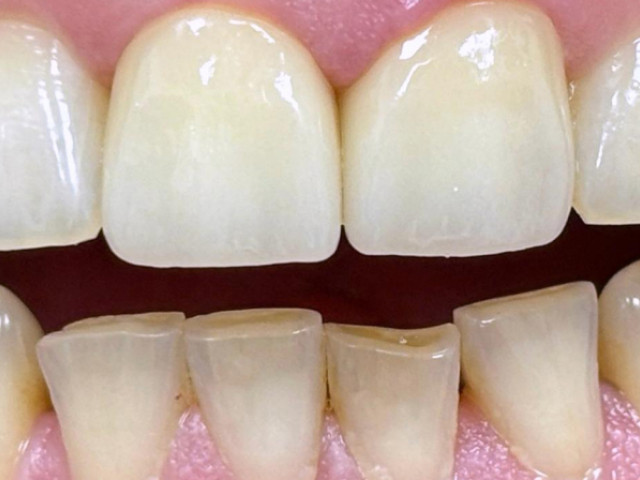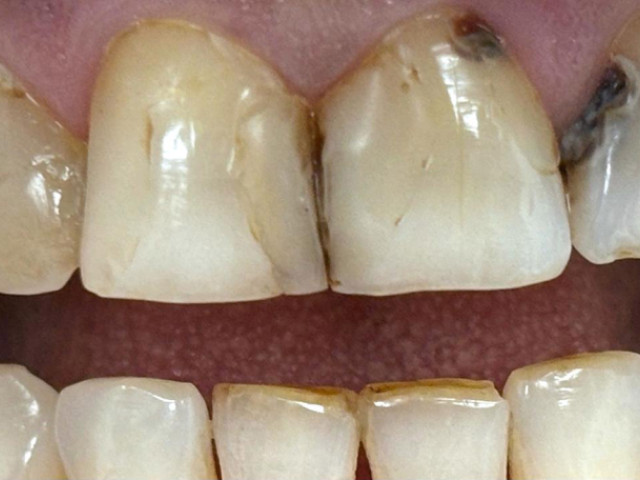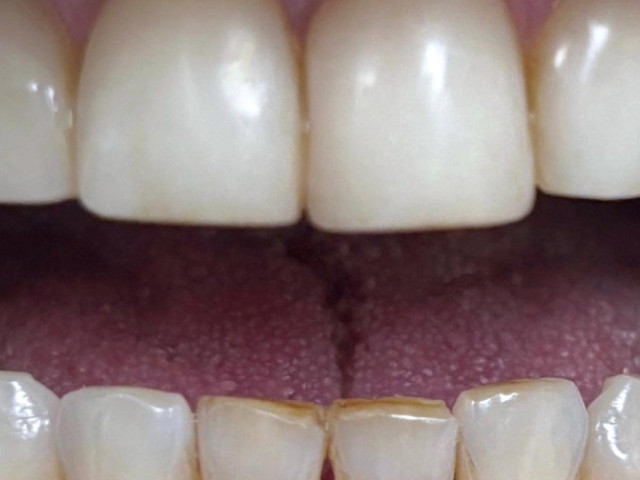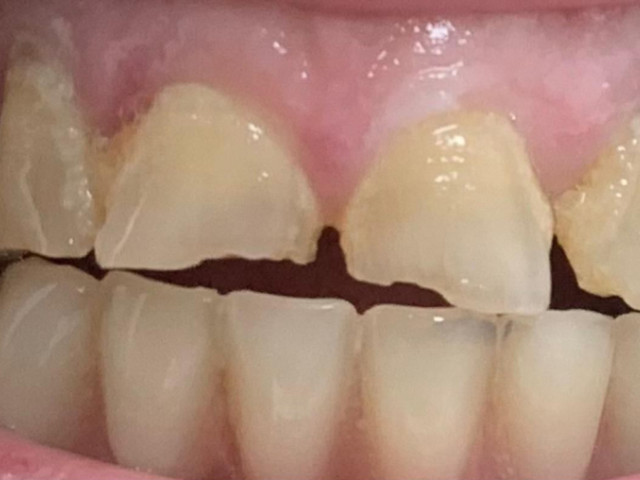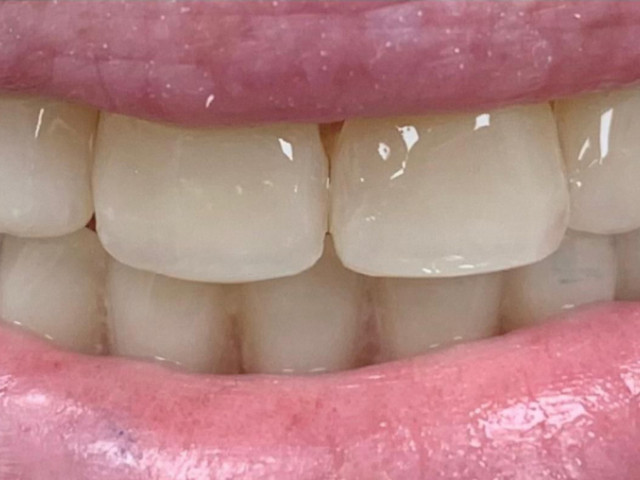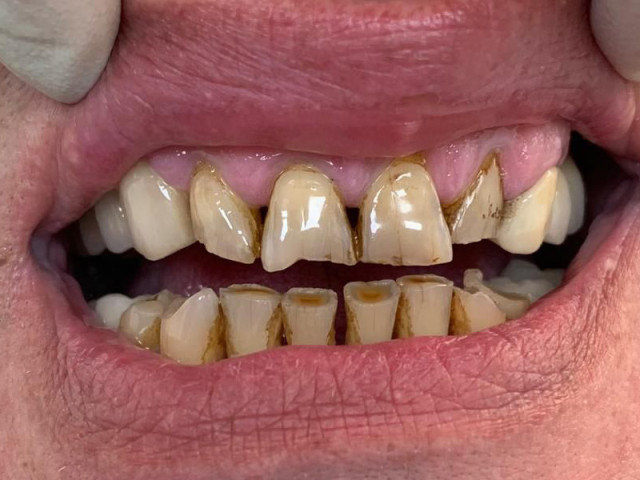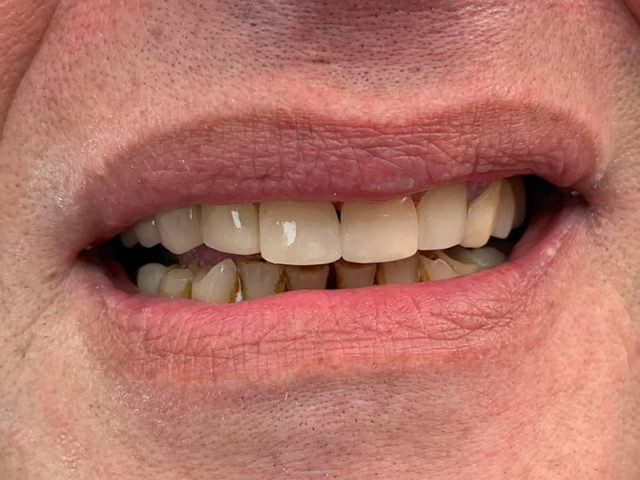Our works
The patient came to us complaining about a chipped old filling and impaired aesthetics of a front tooth.
A 75-year-old female patient, M., presented with complaints of pain and mobility of the mandibular teeth underneath a metal-ceramic bridge. CT imaging of the mandible revealed bone tissue atrophy in the area of the tooth roots. Based on the clinical and radiographic examination, a treatment plan was formulated. The procedures performed included removal of the bridge, extraction of the mandibular teeth, placement of six MIS implants (Israel), and delivery of a temporary screw-retained restoration a few hours after implant placement.
Damage to the integrity of the teeth—especially in the smile zone—is never something we plan for. This was exactly the case here. The patient came in with a fractured crown of the upper central incisor. After a thorough examination and diagnosis, a direct restoration was performed using GC Gradia Direct composite materials.
Sometimes there are situations where it is impossible to restore aesthetics using composite materials. This is often due to bite characteristics. In such cases, zirconia crowns come to the rescue. The advantages of zirconia crowns include high strength, aesthetics, and durability.
We performed a series of procedures aimed at restoring the function of the teeth as well as improving their appearance.
The patient came to our clinic with complaints about aesthetics in the smile line area associated with the shape and color of the teeth. Composite dental restoration was performed
The patient came to our clinic with complaints about aesthetics in the smile line area associated with the shape and color of the teeth. Composite dental restoration was performed

